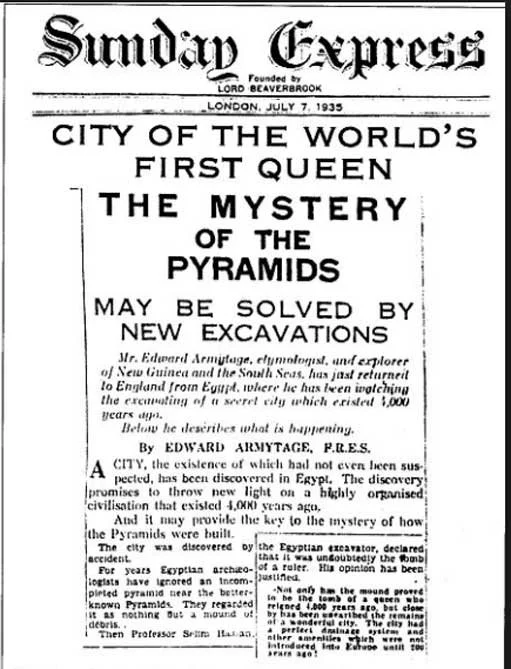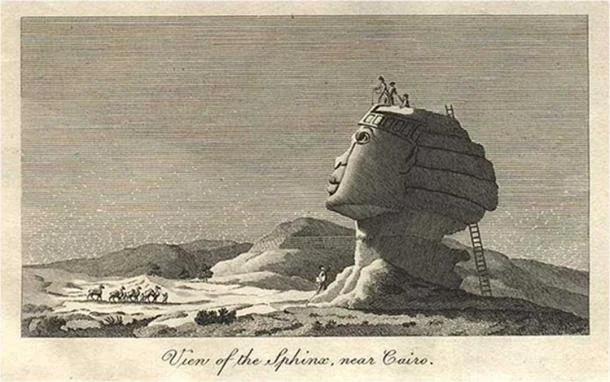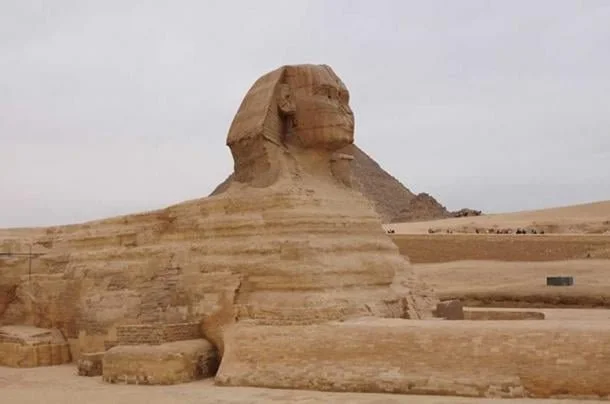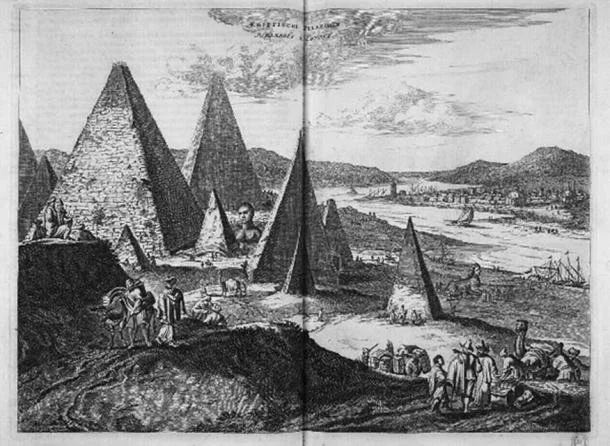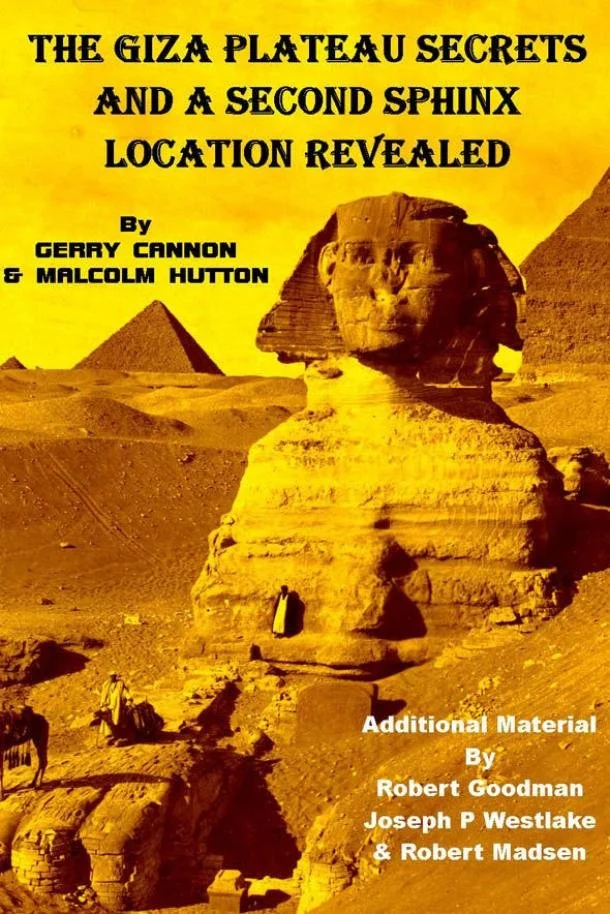In this video we will be exploring scary places from the Ancient World. Enjoy!
20 Greatest Archaeological Discoveries of 2022
The year 2022 saw many amazing finds from archaeologists, but which ones were the most exciting? In this countdown, Dr. Miano ranks the 20 greatest discoveries of the year. Which ones are you the most thrilled about?
What is Hesychasm? - Mystical Practice in Orthodox Christianity
In this video, we talk about the mystical tradition called "Hesychasm" in the Eastern Orthodox Church. Enjoy!
A Mysterious Enchanted Shrine Hidden Under Volcanic Rubble Was Found By Archaeologists In Pompeii
Pompeii is a site that never ceases to amaze. One of the most famous sites in the world still has riches to be uncovered, despite the fact that the devastating volcanic eruption occurred in 79 AD and the ruins of the Ancient Roman city were discovered as early as the 18th century. Now, archaeologists have uncovered a fascinating shrine in Pompeii that had been buried for centuries beneath volcanic ash. Excited to learn more about this remarkable finding? Then, stick around.
When Archeologists Scanned Underneath A Norwegian Farm, They Saw A Hulking Shape Beneath The Soil
It’s September 2019, and a team of archeologists are using ground-penetrating radar technology to scan beneath the surface of a field in rural Norway. An anomaly then catches their attention. Hidden beneath the subsoil is a massive circular formation which is 60 feet in diameter. Ancient and mysterious, it resembles a giant, primordial eye.
Experts Uncovered An Ancient Mosaic That May Shed Light On One Of Jesus’ Most Famous Miracles
It’s summer on the shores of the Sea of Galilee in Israel, and a team of archaeologists are slaving away under the boiling sun. In the ruins of an ancient city, the researchers have discovered the remains of a church that was constructed by Christians many years ago. And as they dig deeper, the team discover a mysterious mosaic. Could this ancient artwork shed new light on a miracle straight out of biblical times?
Restoration Caucasian Dagger - Removing Century Rust
Join us in the video below, where we will be restoring a Caucasian dagger. The work takes a lot of time, but we hope you enjoy it!
Older Than Göbekli Tepe: Harbetsuvan Tepesi Archaeological Update
Today we’ll be taking a look at Harbetsuvan Tepesi. This is one of the 12 Tas Tepeler sites but it is far smaller than Gobekli Tepe and Karahan Tepe but according to archaeologists, it could be the key to really understanding the Neolithic in the region.
Harbetsuvan Tepesi is located around 55km southeast of the modern city of Sanliurfa. It was only discovered in 2014 and excavations took place between 2017 and 2019. This year, in the summer of 2022, further excavations took place.
In this video, we are showcasing Kazuya Shimogama from the Chiba Institute of Technology, who has been working at Harbetsuvan Tepesi this year and is a leading authority on the site. He presents the latest information from this truly ancient site.
The Casing Stones & Pyramidion of The Great Pyramid
Reconstructions of the Great Pyramid often show it glistening and smooth with an enormous gilded capstone. But how realistic is this?
The history of how Egyptian pyramids lost their casing stones is a tale of physics and greed, with only the Bent Pyramid of Dahshur escaping the fate of being entirely plundered.
But were the tips of the pyramids really covered in gold? How big could the capstones (pyramidions) really have been?
We examine the history of these pyramidions and what the evidence suggests about how they might have looked on top of the 4th dynasty megaliths.
History of the Entire World (Ancient, Medieval, Modern)
History of the World attempts to tell the story of humans from Prehistoric times, through the Ancient Period, Middle Ages, and Modern History in a concise movie. It's meant for people who want to have a basic understanding of the major events of human history.
Human history, or world history, is the narrative of humanity's past. It is understood through archaeology, anthropology, genetics, and linguistics, and since the advent of writing, from primary and secondary sources.
Terrifying Discovery Euphrates River Blows Your Mind!
The failure of rainfall in the Middle East has caused the Fertile Crescent to dry up, resulting in horrific findings in the Euphrates. Do you know why the drying of the Euphrates river is causing problems in many countries? If not, then please continue watching this video till the end.
The Euphrates River has delivered unimaginable prosperity to the regions of Turkey, Syria, Iraq, and Saudi Arabia for the past six thousand years. Due to its status as the region's primary water supply, the area has experienced unprecedented levels of growth and fertile soil. But the river's conditions are shifting, and new questions have emerged. Follow us as we delve deeper into the horrifying details that experts have disclosed regarding the alterations in the Euphrates River and what they could imply for the future of humanity.
Archaeologists Have Uncovered The Ancient Secrets Of These Mysterious Scottish Islands
After making his way through the cold waters of Loch Arnish, Chris Murray finds exactly what he is looking for. On this lake on Lewis off the west coast of Scotland, the diver is examining a mysterious man-made island known as a crannog. And, incredibly, the secrets that Murray discovers deep below the water’s surface will change everything that experts know about these strange, prehistoric landmasses.
The Big Egyptian Sphinx hides a True – What makes archaeologists do not want to reveal
In 1935, Egypt was still the main draw for archaeologists digging for answers. It was hardly more than a decade since the British Egyptologist Howard Carter discovered the tomb of Tutankhamen on November 4, 1922, that had lain nearly undisturbed for over 3,000 years. Yet that is another amazing story still to be investigated. However, right now, our attention is focused on the latest attempt to hide the real ancient history of an unknown civilization that left us with great wonders both above and below the sands of the Giza Plateau.
Ancient Lost City Unearthed in Egypt
The first news of a ‘Secret City’ hit the World Press in the first week of March 1935. By July of that year, much more had been found and the Sunday Express ran an article by Edward Armytage who had just returned to England from Egypt where he had watched the excavation of an ancient Egyptian city that was then thought to date back 4000 years.
Media Silence
…….then came silence, as if every living Egyptologist had lost all interest in this wonderful underground metropolis. All their articles during the ensuing years were centered on tombs of queens and shafts that had sunk deep into the ground to burial tombs some time during the 24th Dynasty, which was as late as 732 BC to 716 BC. It is very odd that such an immense discovery of a whole underground city dating back at least 4,000 years was ignored completely in favor of a late period Dynasty that almost passed without notice.
Denial of Previous Discoveries
That was some eighty years ago and today we have come up against a similar ‘rose granite block wall’, in the person of the former Minister of State for Antiquities Affairs, Zahi Hawass , who held that position until Egypt’s revolution in 2011 that toppled Hosni Mubarak—and also ended Hawass’ controversial reign as the supreme chief of all Egypt’s antiquities. However, he still has his ‘finger in the pie’ so to speak. Much has been written about the Egyptian ‘Indiana Jones’ who presents a big smile at one moment but red-raged faced the next when any unwelcome question is posed to him. This side of his character is well documented in Robert Bauval and Ahmed Osman’s book “Breaking the Mirror of Heaven”.
However, such a temperament doesn’t duly explain why Zahi Hawass has so publicly announced that there is nothing at all below the Sphinx, neither any tunnel nor a single chamber, when there have many photos of him entering descending shafts from the head of the Sphinx and another at the far rear of the Lion Body. Are we supposed to forget completely what we have seen several times in the past and accept such denials without question?
Statements Contradict Photographic Evidence
Apparently, he brushed off such enquiries of hidden tunnels under the Giza Plateau and chambers under the Sphinx by saying that it wasn’t possible to look deeper, as the chambers were either blocked or full of water. That may well be the case, though we can see from one of the photos showing a rear downward shaft from the side of the Sphinx that the floor far below is quite dry.
We do know that Hawass had climbed down ladders from the rear entrance of the Sphinx, into a deep chamber on a middle layer and then even further down to a bottom chamber which apparently contained a very large sarcophagus and that was filled with water, as these scenes are all in a documentary film made by Fox. It is hard to imagine how he could possibly think that he could later deny all that he had earlier accomplished.
A Hole in the Sphinx’s Head
Around 1798, Vivant Denon etched an image of the sphinx, although he hadn’t copied it that well. However, he no doubt knew that there was a hole on the top of its head as he had drawn an image of a man being pulled out.
A sketch can hardly be used as proof, but in the 1920’s an aerial photo of the sphinx taken from a hot air balloon showed that there is such an opening on the top of its head.
The Enigma of the Sphinx’s Head
It seems quite clear from the totally different construction materials and color of the Sphinx head, which we believe is not rock, but some type of man-made substance compared to its limestone and eroded body, that the head and face of the Sphinx must have been changed from its original shape long after the monument was first carved. There is hardly any erosion to the head compared to its body.
The sides of the headdress are quite smooth and we only need glance at the mythical creature to spot the lighter color of the body compared to the darkness of the head.
According to Tony Bushby in his “The Secret in The Bible” a badly fragmented Sumerian cylinder tells a tale that could easily be taken as having happened at Giza and involving a beast that had a lion head with a tunnel entrance hidden by sand. Everything now points to the Sphinx body having been sculpted out of natural stone when there was frequent heavy rainfall and that takes us back to about the same time that Robert Bauval and Robert Schoch have calculated for the construction of the Orion’s Belt Pyramids, i.e. circa 10,450 BC.
Two Sphinxes?
There have been sketches of the Giza (the word Gisa in Ancient Egyptian means ‘Hewn Stone’) complex from as far back as 1665 and some do show two heads peering out of the sands, one usually having female features.
It was an ancient Egyptian practice to inscribe two lions, which they called Akerw, next to their doorways for heavenly protection and that would lead us directly to a mound near the sphinx, which Gerry has identified and measured. Could this mound contain the buried body of a second sphinx?
One would have thought that this mysterious, large, covered shape so close to the sphinx would have been greeted with great enthusiasm by the Egyptian authorities, yet Hawass and Mark Lehner didn’t want to listen to his theory, according to a reliable source.
Gerry had contacted someone in a renowned institute in Cairo that had equipment that could detect objects under the sand. That person applied for a permit to the then Supreme Council of Antiquities to investigate the mound, but they didn’t respond. Apparently, no one else was granted a license to investigate the specific area of the mound where we believe a Second Sphinx could be unearthed. No doubt they had a reason for it!
Why the Denial?
Why would those two Egyptologists be so alarmed by the suggestion that there was something that had been missed for centuries? Is it possible that they don’t want to reveal something beneath that mound? It isn’t reasonable that anyone should have so much objection to any kind of probe or even a simple aerial photograph being taken, which might lead to the discovery of yet another amazing wonder of the world and a wonder that would draw many more thousands of tourists to Egypt. They won’t even admit to ever having examined the mystery mound themselves, and surely had this been done they would be the first to say so.
A few years ago, Zahi Hawass met the Foreign Press Association in Cairo to vent his frustration with a group of pseudo-scientists whose personal attack, through television and other media, had escalated to the point where it had become threatening. Apparently, he was worried that a NBC interview would support and publicize their ideas, which he suggests were purely for personal gain.
He apparently said in a statement:
"I want to talk about things that do not make any sense,”
His gesture expressed his increased frustration with what he commonly classified as "pyramidiots" - those with views greatly at variance with the established scientific community.
"They are saying secret excavations…are going on around the Sphinx and are not being revealed. This is definitely not so."
Zahi Hawass is not only a great showman and probably the most knowledgeable man in the world about ancient Egypt, he has also achieved a lot to promote tourism for his country. However, he appears to have an agenda, and that is to keep in place the conventional understanding of ancient Egyptian history, no matter how many new findings contradict what is currently believed to be true.
What is Gruel?
In today’s video we will talk about gruel. Watch the video for more and enjoy!
Jordan River Has Finally Dried Up And Something Terrifying Is Happening!
In the video below we will be talking about Jordan river, and how it has finally dried up. Enjoy!
Why The Ancient Greeks Couldn't See Blue
In this video we will be investigating why the Ancient Greeks couldn’t see blue. Enjoy!
What did orator Demosthenes say about ancient Macedonians?
By Sarantos I. Kargakos
Had it not been for Demosthenes' slanderous characterizations against Philip - especially against Alexander - the question of the Greekness of the Macedonians would not have been raised. Every supporter of this opinion relies on Demosthenes. The other data they put forward are merely supplementary elements, which have no historical weight.
We could consider Demosthenes' insults as an outburst of political passion that drives him into the madness of insults and that's all. When someone insults, he does not mince words. That is why Demosthenes often calls Philip the barbarian, knowing that he is insulting and humiliating him. But if Philip was a barbarian (foreigner), why should this characterization bother him? Even with this designation, Demosthenes wants to portray Philip as a foreigner who usurps the freedom of Greece in order to unite all Greeks against him. In politics, the end justifies the means.
But the extent to which Demosthenes' characterizations are accurate can be seen in the insults of his great rival, Aeschines, who also calls Demosthenes a barbarian!
In particular, in the famous "On the False Embassy" oration,the insulting phrase is heard twice: "And you say this, Demosthenes, although your lineage on your mother's side is descended from Scythian nomads". And again: "On his mother's side, Demosthenes is a Scythian. A barbarian who uses the Greek language!"
His mother Demosthenes Kleoboulis was the daughter of Gylonos, who had settled in the Taurian peninsula (Crimea). But I ask: Are insults a solid basis for the scientific foundation of historical theories? With this I do not want to bypass the only "document" that Mr. J.B. quotes. Rather I will present all insults of Demosthenes chronologically in order to be able to draw the necessary conclusions. Before doing so, however, I will avoid mistaking the great orator for a common insulter and examine the meaning of the Demosthenes-Philip dichotomy, which reflects the dichotomy of the democratized southern Greek cities versus the monarchical Greek north. One element is that the Greeks had a politics of city-states. They had a city-centric view. The city was the center of all political action. In other words, Athens, Sparta, Thebes were important cities.
Statue of Demosthenes
Macedonia, on the other hand, was a state with many cities, but they were not so important that they determined political life. Thus, the state-centered monarchical system of the northern Greeks contrasted with the city-centered democratic system of the southern Greeks. Demosthenes' opposition to Philip was thus not racial, as many propagate. It was politics. If Philip had in mind the Great State, Demosthenes, who had grown up with other political ideals, had in mind the Great Man, "the free in justice". The Citizen, not the servant of the state. The personality and character and not faceless political being. Therefore, he remained faithful to the idea of "Athenism". Only Athens gave him some guarantees for the State of Free Citizens.
Demosthenes did not reject the idea of Panhellenism. But he gave it cultural meaning. Philip made a realistic policy. Demosthenes from the 4th century BC imagines a federation of cities with a democratic form of government. Philip, on the other hand, sought a unity of Greeks by all means. He was a Machiavelli who did not write, but acted. Therefore, the conflict between Demosthenes and Philip was not a conflict of races, but a conflict of visions.
Yet despite noble visions, neither shied away from mean means. After all, they were engaged in politics, not religious preaching. Macedonia and Philip were what Prussia and Bismarck were to Germany. If Bismarck expected to unite Germany with Kant's wonderful vision of perpetual peace, he should have eternal life as well. But the politicians who create eternal work are those who know that life is short and time is running out.
Let us now turn to the "shocking" document that J.B. quotes:
"Not only a non-Greek and not related to the other Greeks, but not even a barbarian from any place that could be called with any honor, but like a pestilent knave from Macedonia, where one cannot even buy a decent slave" (The Third Philippic, Demosthenes' political orations ). But let us see what Demosthenes himself says: "Not only is he not a Greek, nor has he anything in common with the Greeks, but he is not even a barbarian of good stock, but a pernicious Macedonian, from whose country one cannot even buy a slave."
The reader should note that Mr. J.B. commits a scientific indecency. He translates "pernicious Macedonian," which is indeed a heavy epithet, with the phrase "pestilent knave from Macedonia," which has no correspondence with the original. No Greek researcher denied that this text, because of its verbal severity, raises the suspicion of an ethnic division between Greeks and Macedonians. It is also not absent from any Greek historiography, ancient or translated. However, what Mr. J.B. seems to ignore the psychology of language, i. e. a word that means something specific, is used with a different meaning in a specific case. We all know, for example, what history means.
Statue of Philipp of Macedon in Thessaloniki, Greece
But you have to know the psychology of the Greek language to understand the phrase "we will have histories", which means entanglements, struggles, and so on. We all know what politics means, but few know that politics in the medieval Greek language meant also whore! So, in order to understand Demosthenes' phrase, we need to know the psychology of language, which means that in relation to Philip, we need to trace the psychological transitions or upheavals that Philip's politics triggers in him. We begin with an observation: of the nine orations Demosthenes made against Philip, Philip is called a barbarian in only three (the relevant part in the "Against Stephanos" oration is a later addition). But let us start with the orations from the beginning:
1. In the "First Philippic" oration against Philip, written when the Macedonian king had reached Thermopylae and was also threatening to cut Athens off from the allied cities of Thrace and Euxinus, Demosthenes uses harsh language but never calls him a barbarian. Neither in the First nor in the Second Olynthiac oration.
2. Philip is first called a barbarian in the Third Olynthiac oration: "He is not an enemy, he does not possess what is ours, he is not a barbarian, whatever else one may say". The last sentence ("whatever else one may say") shows that the previous word "barbarian" is also used as an insult and not as a national designation. Demosthenes here stigmatizes Philip's behavior and not his origin.
3. In 346 BC, Demosthenes delivered his "On the Peace" oration. Philip has already conquered Olynthos, crushed the Phocaeans, and become a member of the Delphic Amphictyony. But now that the threat is more immediate, Demosthenes says nothing in his speech about Philip being a barbarian. Yet it would have been a wonderful opportunity for him to denounce before all Greeks that a barbarian had become a member of the amphictyony in which only Greeks participated. The reason why he did not do this is simple: he knew that all Greeks knew that Philip was not a barbarian.
4. In 341 BC, Demosthenes delivered the "On the Chersonese" oration,which is a war cry against Philip, who is not called a "barbarian" here either. And yet Demosthenes had just returned from Macedonia, where he had gone as an ambassador and stayed for three months. Therefore, he had the opportunity to learn the language, customs and traditions of the Macedonians. If he thought they were barbarians, why would he miss such a wonderful opportunity to comment on them?
5. A year later, he delivers the "On the False Embassy" oration and while he sharply characterizes Philip, he still says nothing about barbarism. This oration is of a legal nature and is directed against Aeschines, the leader of the "Macedonian party" in Athens. His aim is to show the opportunism and political immorality of Aeschines and to point out his contradictions. Specifically, he says of Aeschines, "Formerly he preached before the people and called Philip barbarian and destructive. But now Aeschines calls him the most Greek of men and the greatest friend of Athens!". With this rhetorical trick Demosthenes tries to expose Aeschines in the eyes of the Athenians as well as in the eyes of Philip.
6. Finally, in "third against Philip" is found the sentence to which J.B. refers and modifies in the translation. In this oration from 341 (three years before the battle of Chaeronea) Demosthenes, desperate to see Philip's omnipresence, has lost control of his words, treats Philip like a gladiator, and uses the worst insults against him. This verbal frenzy and verbal jibes are aimed at insulting Philip personally and his country in general. This is also evident in the sentence of the ancient commentator of Demosthenes, who examines the characterization of "barbarian" in the third Olynthiac:
"Because Demosthenes wants to insult Philip, he calls him a barbarian. But if he really wanted to investigate, he would find that he is a Greek from Argos, descended from the lineage of Hercules, as all historians confirm."
Statue of Alexander the Great in Thessaloniki, Greece
Personally, I do not like simple interpretations. Demosthenes has a political goal in the sense that he wants to destroy Philip by any means. He sees the Macedonian monarch as an enemy of Greek freedom, i.e. the autonomy of the Greek cities. Therefore, with the last sentence, he actually wants to portray him as a foreigner in the eyes of the other Greeks and the Macedonians as foreigners seeking Greek independence in order to achieve a panhellenic alliance against them. So passionate is he that he does not hesitate to recommend to the Athenians an alliance with the Persians against Philip (Fourth Philippic):
"I think you should send a legation (to the Persians) to converse with the Persian king, leaving aside the silly phrase "the barbarians are the common enemy of everything and everyone".
Thus Demosthenes frees the Persian king from the status of barbarian and assigns it to Philip, whom he also calls "the robber of the Greeks" and implores the gods to destroy him.
Full tour inside the Great Pyramid of Giza | Pyramid of Cheops aka Khufu
The Great Pyramid of Giza (also known as the Pyramid of Khufu or the Pyramid of Cheops) is the oldest and largest of the pyramids in the Giza pyramid complex bordering present-day Giza in Greater Cairo, Egypt. It is the oldest of the Seven Wonders of the Ancient World, and the only one to remain largely intact. Egyptologists conclude that the pyramid was built as a tomb for the Fourth Dynasty Egyptian pharaoh Khufu and estimate that it was built in the 26th century BC during a period of around 27 years.
Initially standing at 146.5 meters (481 feet), the Great Pyramid was the tallest man-made structure in the world for more than 3,800 years. Over time, most of the smooth white limestone casing was removed, which lowered the pyramid's height to the present 138.5 meters (454.4 ft). What is seen today is the underlying core structure. The base was measured to be about 230.3 meters (755.6 ft) square, giving a volume of roughly 2.6 million cubic meters (92 million cubic feet), which includes an internal hillock. The dimensions of the pyramid were 280 royal cubits (146.7 m; 481.4 ft) high, a base length of 440 cubits (230.6 m; 756.4 ft), with a seked of 5.5 palms (a slope of 51°50'40").
The Great Pyramid was built by quarrying an estimated 2.3 million large blocks weighing 6 million tonnes in total. The majority of stones are not uniform in size or shape and are only roughly dressed. The outside layers were bound together by mortar. Primarily local limestone from the Giza Plateau was used. Other blocks were imported by boat down the Nile: White limestone from Tura for the casing, and granite blocks from Aswan, weighing up to 80 tonnes, for the King's Chamber structure.
There are three known chambers inside the Great Pyramid. The lowest was cut into the bedrock, upon which the pyramid was built, but remained unfinished. The so-called Queen's Chamber and King's Chamber, that contains a granite sarcophagus, are higher up, within the pyramid structure. Khufu's vizier, Hemiunu (also called Hemon), is believed by some to be the architect of the Great Pyramid. Many varying scientific and alternative hypotheses attempt to explain the exact construction techniques.
The funerary complex around the pyramid consisted of two mortuary temples connected by a causeway (one close to the pyramid and one near the Nile), tombs for the immediate family and court of Khufu, including three smaller pyramids for Khufu's wives, an even smaller "satellite pyramid" and five buried solar barges.
What Scientists Found in Russia Has Left People Speechless
Russia is a country steeped in history and full of wonder. And for people outside of Russia, there is also a sense of mystery. It’s the largest country in the world, spans over two continents, and has 11 different time zones. And as we’ll uncover, it is also home to a number of mysteries happening too. Here are 15 unsettling discoveries in Russia nobody can explain.
Extremely Rare Discovery in Egypt Kept Secret!
With their magnificent buildings and their unique culture, the ancient Egyptians have managed to immortalize themselves deeply in the consciousness of posterity. Although the age of mummies and pharaohs has passed for many centuries, that fascinating civilization still fascinates us. While the overwhelming buildings of the Egyptians have always attracted countless tourists from all over the world, archaeologists are working flat out to uncover the secrets of the inhabitants of the pharaohs, which are still hidden.
However, it happens that the experts occasionally come to a dead end in their search for clues. What's more, it sometimes seems as if some discoveries are being deliberately withheld from the interested public - or have you actually heard of the Baka Pyramid? This unfinished masterpiece is one of the greatest mysteries ancient Egypt has to offer. What is the background of this building really about? What purpose should it have served? And above all: Why was the gigantic construction project suddenly abandoned? Together with you we are looking for answers today!


